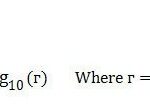What is RSSI in LTE?
Today, let me walk you through the concept of RSSI in LTE. If you’ve been reading through some of our earlier articles, you might already have a basic understanding of how signals work in LTE networks. Now, we’ll take a closer look at RSSI, which stands for Received Signal Strength Indicator. This parameter plays an essential role in determining the quality of a signal in LTE networks.
Understanding RSSI in LTE
RSSI is a measure of the total power received by the User Equipment (UE) at a given moment, which includes not only the useful signal but also any noise or interference present on the channel. In simpler terms, RSSI gives an indication of how strong the signal is that your device is receiving. However, it is important to note that it doesn’t distinguish between the desired signal and interference; it just tells you the overall strength of the signal received.
How RSSI Differs from RSRP and RSRQ
In LTE, there are other related measurements such as RSRP (Reference Signal Received Power) and RSRQ (Reference Signal Received Quality). You might wonder, how does RSSI compare to these parameters?
| Parameter | Description |
|---|---|
| RSSI | Measures the total received signal power (signal + interference + noise). |
| RSRP | Measures the received power of the reference signal, which is a more accurate indication of the signal quality. |
| RSRQ | Measures the quality of the received signal by considering both the RSRP and the RSSI. |
As you can see, RSSI is more of a general measure, while RSRP and RSRQ focus on the quality of the reference signal, which is crucial for successful communication in LTE networks. Understanding these different parameters helps in optimizing network performance and ensuring your device gets the best connection possible.
Why is RSSI Important in LTE?
Now that you know what RSSI is, let me explain why it’s important. RSSI helps in evaluating the strength of the signal a device is receiving. A higher RSSI value indicates a stronger signal, which means better chances for data transmission with fewer errors. On the other hand, a low RSSI could lead to weak or unreliable connections. This can be problematic, especially when you are trying to perform high-bandwidth activities like streaming or downloading large files.
RSSI is also essential for determining cell coverage. When your device moves through different parts of the network, RSSI measurements help the system decide whether your device should stay connected to the current cell or perform a handover to a different one. The stronger the RSSI, the more likely it is that the device will remain connected to that particular cell.
How Does RSSI Affect Your LTE Experience?
In previous articles, we’ve discussed different factors like SINR (Signal-to-Interference-plus-Noise Ratio) that impact your LTE experience. RSSI plays a role here as well. A higher RSSI contributes to better SINR, leading to a more reliable and faster connection. As you continue to explore LTE performance, you’ll see that balancing these parameters—RSSI, SINR, and others—is key to a smooth experience.
For instance, when you move into an area with poor LTE coverage, you may notice a decrease in signal strength, which leads to a drop in RSSI. If the RSSI becomes too low, you might experience slower speeds, interruptions, or even disconnections. In such situations, the network may attempt to hand you over to a nearby cell or use other methods to improve your connection.


